
views
X
Trustworthy Source
Centers for Disease Control and Prevention
Main public health institute for the US, run by the Dept. of Health and Human Services
Go to source
American women tend to live almost five years longer than men. The most common cause of premature death in the U.S., by a large margin, is cardiovascular disease (heart attack, stroke, lung disease), followed by cancer, then accidents leading to fatal injuries.
Reducing Risks of Cardiovascular Disease
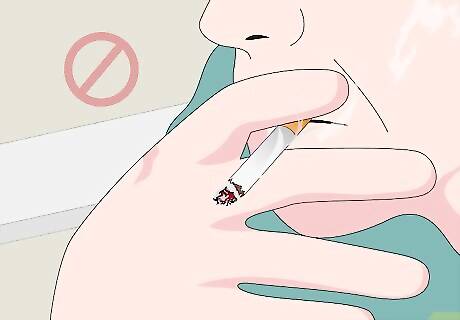
Stop smoking. Smoking tobacco is one of the most harmful things you can do on a regular basis. It's well established that smoking damages nearly every organ of the body and causes many diseases, including all sorts of cardiovascular related problems, which contribute significantly to premature death. Smoking is estimated to increase the risk of coronary heart disease and stroke due to atherosclerosis by up to 4x compared to non-smokers. Cigarettes contain a variety of toxic compounds that damage blood vessels and poison tissues. Cigarette smoking causes more than 480,000 deaths each year in the United States, which is about one in five deaths. Smoking is also the leading cause of chronic obstructive pulmonary disease of the lungs and lung cancer. Use nicotine patches or gum to help wean yourself off cigarettes. Try following the mnemonic START to help you get quit: S= Set a quit Date. T= Tell family and friends that you plan to quit. A= Anticipate and plan ahead for hard times. R= Remove tobacco products from. the home, car, work, etc. T= Talk to your doctor about smoking cessation
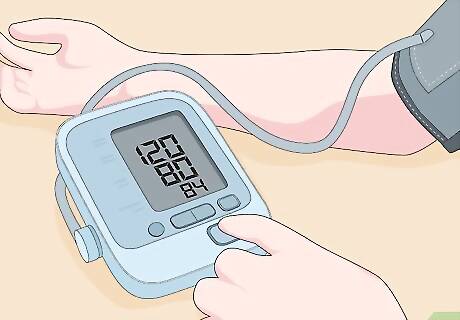
Control your blood pressure. High blood pressure (hypertension) is often referred to as the "silent killer" because it doesn't often cause noticeable symptoms until it's too late. High blood pressure puts strain on the heart and damages the insides of arteries over time, which promotes atherosclerosis or clogged arteries. It also promotes stroke and kidney disease. Blood pressure can be reduced with medication, although some people experience significant side effects from it. Natural ways of reducing blood pressure include losing weight if you are overweight, eating a healthy diet based on lots of fresh produce, cutting back on salt (sodium) consumption, daily exercise and controlling your stress via meditation, deep breathing techniques, yoga and/or tai chi. Hypertension is defined as having blood pressure greater than 140/90 mm Hg on a regular basis. The DASH diet is often recommended for hypertension and it emphasizes fruits, vegetables, whole grains, poultry, lean fish, and low-fat dairy foods. Get plenty of potassium, which can help prevent and control hypertension, but limit your sodium intake to less than 1,500 mg daily.
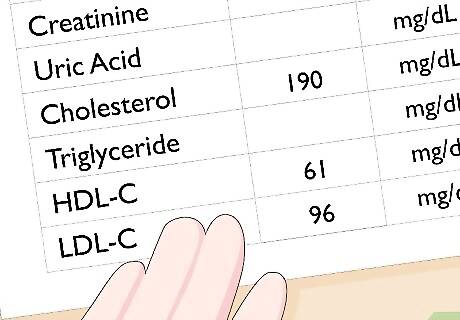
Maintain healthy cholesterol levels. Although eating fat, even saturated fat, is healthy in moderation — after all, fatty acids are needed to make all cell membranes in the body — too much "bad fat" is damaging to cardiovascular health. Although saturated fat (the kind found in animal products) is often touted as unhealthy, the kind that really causes problems is trans fat, which is an artificially made hydrogenated vegetable oil found in most fried foods, margarine, cookies and chips. Trans fats raises the "bad" LDL cholesterol and lowers the "good" HDL cholesterol in your blood, which increases the risk of heart attack and stroke. Normal total cholesterol levels in the blood should be less than 200 mg/dL. LDL cholesterol should be less than 100 mg/dL, whereas HDL levels should be above 60 mg/dL for optimal protection against cardiovascular disease. The healthiest fats are often considered to be monounsaturated and polyunsaturated plant-based fats. Foods rich in polyunsaturated fat include safflower, sesame and sunflower seeds, corn oil and soybeans; whereas great sources of monounsaturated fat include avocados, canola, olive and peanut oils.

Be more physically active. Another important factor in reducing your risk of dying prematurely from cardiovascular disease is getting regular exercise and maintaining a healthy weight. Obesity puts lots of strain on the heart and blood vessels, which leads to dysfunction eventually. Only 30 minutes of mild-to-moderate cardiovascular exercise each day on a regular basis is linked to better health and longevity, as it can reduce blood pressure and cholesterol levels, as well as trigger gradual weight loss. Start with walking around your neighborhood, if weather permits, then transition to more difficult terrain, tread mills and/or cycling. Avoid vigorous exercise to start with, or if you have a known heart condition. Vigorous exercise (such as marathon running) temporarily increases blood pressure and strain on the heart, which may trigger a heart attack. Thirty minutes of daily exercise is good for your health and an hour is even better, but much beyond that amount isn't proven to be significantly more beneficial. Recommendations for exercise include the President’s Council on Fitness, Sports, and Nutrition. These recommendation include doing 150 minutes (2 ½ hours) of moderate intensity exercise every week. Types of moderate intensity exercise include ballroom dancing, biking slowly, gardening, using your manual wheelchair, walking, and water aerobics. More vigorous activities are biking up hills, basketball, swimming laps, and running.
Reducing Risks of Cancer
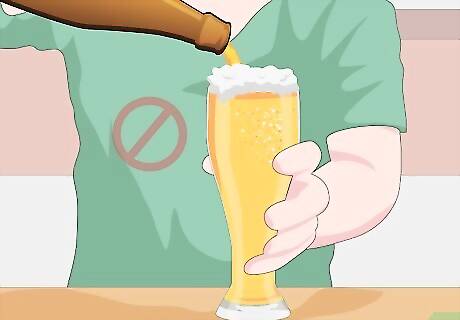
Reduce alcohol consumption. Based on extensive research, there is a strong association between alcohol drinking and several types of cancer, especially of the mouth, throat, breast, liver and large intestine. Ethanol, the type of alcohol commonly consumed, is a known human carcinogen. In essence, the more alcohol a person consumes regularly over time, the higher the risk of developing cancer and dying prematurely. As such, either stop drinking alcohol or limit your consumption to no more than one alcoholic beverage in a 24-hour period. Alcohol is known to "thin" the blood, which can be helpful for reducing the risk of atherosclerosis, but the net effect of ethanol on health is clearly negative. The least harmful alcoholic beverage is thought to be red wine because of its antioxidants (resveratrol); however, human research does not provide evidence that resveratrol is effective in preventing or treating cancers. A significant proportion of people who regularly consume alcohol also habitually smoke tobacco. Smoking is a leading cause of many cancers, but the risks greatly increase when combined with drinking alcohol, particularly for cancers of the mouth, throat and esophagus.

Eat food with more antioxidants and less preservatives. Antioxidants are compounds (mostly from plants, fruits and veggies) that prohibit or even prevent the oxidation of other molecules in the body. While oxygen is obviously needed in the body, oxidation of certain compounds is often a bad thing because it produces havoc-wreaking "free radicals," which can damage surrounding tissue and even alter its DNA. Consequently, free radicals are linked to cancer, cardiovascular disease and premature aging. Preservatives, which are found in almost all prepared foods found on the shelves of grocery stores, are also damaging to the body due to free radical formation and general toxicity. As such, focusing on consuming lots of antioxidants is a good strategy to prevent cancer. Compounds that act as strong antioxidants include vitamins C and E, beta-carotene, selenium, glutathione, coenzyme Q10, lipoic acid, flavonoids and phenols, among many others. Foods particularly rich in antioxidants include: all dark colored berries, strawberries, apples, cherries, artichokes, kidney beans and pinto beans. Other foods considered protective against cancer include broccoli, tomatoes, walnuts and garlic.
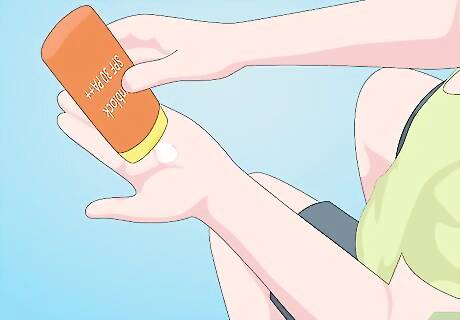
Limit sun exposure. Sun exposure is needed for all life to thrive, but overdoing it (especially if you're constantly getting sunburned) dramatically increases the risk of skin cancer. In moderate amounts, particularly during the summer months, sunlight triggers vitamin D production in the skin, which has many known benefits including stimulating immunity and regulating mood; however, the ultraviolet (UV) radiation in sunlight (also in many tanning beds) damages skin cells, sometimes on a DNA level, which leads to mutations and cancer development. As such, don't avoid the sun, but limit your direct exposure to no more than an hour per day. If you plan on being outside longer, then cover-up with a hat and light-weight breathable cotton clothes, or use natural forms of sunblock and sunscreen. The American Academy of Dermatology recommends using a sunscreen that is SPF 30 or greater with broad-spectrum coverage for UVA and UVB rays. If you are outside or at the pool make sure that the sunscreen is water resistant. Skin cancer is the most common type of cancer, accounting for about 3.5 million cases a year in the U.S. Basal and squamous cell skin cancers are most common, but melanoma is the most deadly. Major risk factors for skin cancer include: pale skin, severe sunburns in the past, many or unusual looking moles, older age and weakened immune systems. Chronic exposure to coal tar, paraffin, and most hydrocarbon-based products also commonly cause skin cancer.
Reducing Risks of Fatal Accidents

Wear your seat belt. Fatal accidents are another common cause of premature death in the U.S., with motor vehicle crashes leading to about 2.2 million Americans being treated in ER departments in 2012. Although modern air bags are a great safety feature and contribute to saving lives, seat belts are still considered an essential injury prevention tool because they prevent people from being thrown from their vehicles. It's estimated that seat belt use reduces serious crash-related injuries and deaths by about 50%. As such, buckle up every time you enter a vehicle if you want to reduce the risk of premature death from injury. Teenagers between the ages of 13–20 years are the least likely group to wear seat belts, and therefore, tend to suffer more fatal injuries. Men are about 10% less likely to wear seat belts compared to women. Another way of reducing fatal injuries in car accidents is to drive a large vehicle because they tend to ride higher and are heavier, which are both protective factors.

Wear a motorcycle and/or bicycle helmet. Another simple way of preventing fatal trauma, particularly to the head, is wearing a helmet while on a motorcycle or bicycle. In 2010, about 42% of motorcyclists who were fatally injured were not wearing helmets. In that same year, it's estimated that helmets saved over 1,500 riders’ lives, but some states don't require their use so some riders prefer to legally go without. The human skull feels pretty strong, but the brain is very susceptible to injury because it bounces around inside the skull in response to trauma. High speeds or severe impacts are not needed to damage the brain and cause death. This explains why bicyclists can die from head injuries, but rarely anything else. Helmets don't protect from whiplash-like trauma, but they are great at deflecting or dispersing blunt trauma. On average, U.S. states with universal helmet laws save eight times more riders’ lives each year compared to states without any helmet laws. It's not enough just to wear a helmet — make sure it's fastened tightly to your head. Also, wear a helmet designed for horseback riding when riding horses. Concussion and trauma can occur if you fall off of a horse without a helmet.
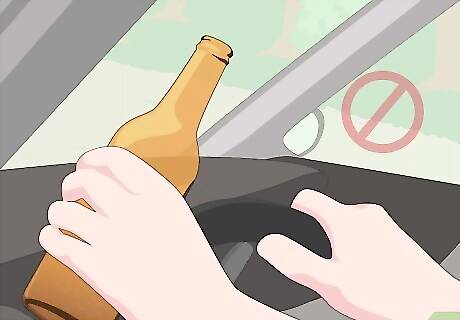
Don't drink and drive. It should be clear that drinking alcohol does not mix with driving a car or operating heavy equipment, yet many people continue to do it because alcohol distorts a person's judgement and ability to think clearly. In the U.S., an estimated 32% of fatal car accidents involve an intoxicated driver (or pedestrian). In addition to poor judgement, driving intoxicated is dangerous because alcohol reduces reaction times, decision making and coordination. Approximately 13,000 Americans are killed each year in alcohol-related accidents. All U.S. states have adopted .08% blood alcohol concentration (BAC) level as the legal limit for driving a car (aged 21 years or older), although most accidents occur with .10% BAC levels. In addition to not drinking, avoid talking on a cell phone or texting while driving (even with a hands-free set) as it takes your attention off the road.
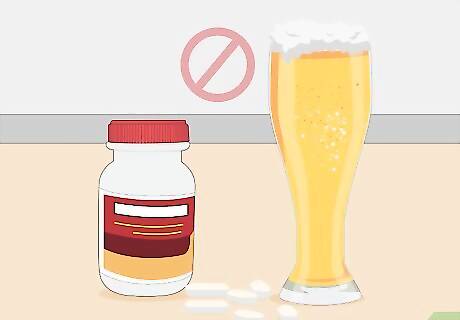
Don't mix alcohol with drugs. Another combination that doesn't mix is drinking alcohol while taking drugs (illicit, prescription or even over-the-counter types). The by-products of alcohol and all drugs are metabolized in the liver, and sometimes when certain compounds are mixed together a toxic reaction occurs that can severely injure or completely shut down the liver, leading quickly to death. As little as a couple of pain relievers, such as acetaminophen, mixed with a glass a wine can potentially lead to liver failure. In addition, combining alcohol with drugs often leads to dramatic changes in perception, behavior, mood, breathing rate, blood pressure, and other parameters, which can all increase the risk of dying prematurely. As such, never combine the two at the same time. It takes hours for most drugs to be processed by the liver, so make sure to time the addition of alcohol safely — at least three hours later as a general rule and sometimes as long as six hours. Sometimes drugs are taken because of the effects of alcohol (such as an aspirin for a hangover-type headache). Thus, quitting drinking may remove the need to take certain medications altogether.



















Comments
0 comment